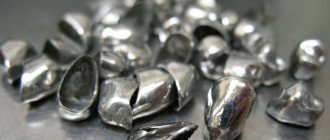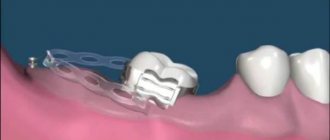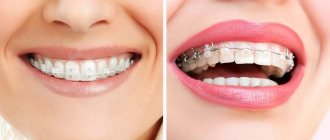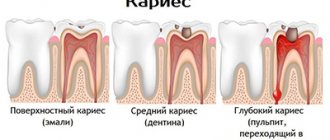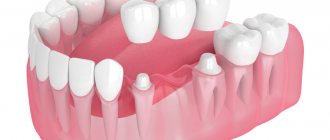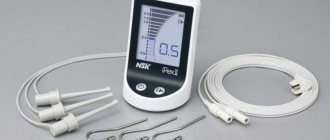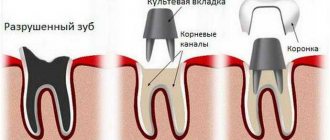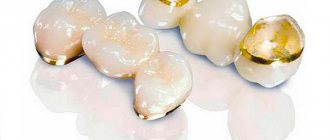Quite often, after an initial dental treatment session with a dentist, the patient returns home with a temporary filling. Many people are beginning to wonder why it is not possible to put in a long-term option to eliminate return visits and whether temporary fillings are simply a way for doctors to make extra money.
What is a temporary filling?
What does a temporary filling look like?
The standard temporary filling is one that is installed at an intermediate stage during treatment. This option is made from fairly cheap materials, which are subsequently removed quite easily.
Although the material used is flexible and will not dissolve, temporary sealing is not suitable for long-term use.
At the moment, there are various options for temporary plugs, divided depending on the material used. In its natural state, it has a very viscous and dense consistency, reminiscent of a paste.
The most popular temporary fillings:
- Children's colored temporary fillings
Dentin paste consists of sulfate and zinc, together with amalgam . Prevents liquid penetration and tooth staining;
- artificial dentin cannot be kept in the mouth for more than 3 days; it must be air-dried before placement in the tooth;
- Vinoxol can be kept in the mouth for up to 4 months. It has disinfecting properties and good strength after installation;
- in fixation of prostheses and for children, biocompatible cement is used - polycarboxylate ;
- A mixture of zinc oxide and eugenol shows sufficient effectiveness and disinfection .
The main difference between such a plug and a permanent one is the service life of the materials used. A permanent filling is made to be worn in the tooth for a number of years; it adheres tightly to the natural walls of the tooth, so it is quite difficult to get rid of it.
Temporary cork is looser and has virtually no adhesion, so they are not typically kept in the mouth for more than a week, although there are materials with a longer lifespan.
Once the mixture hardens on the tooth, it is difficult for the average person to distinguish what a temporary barrier looks like from a permanent one, since the differences relate not so much to appearance, but to other areas.
What materials are used?
To create a temporary filling, your dentist may use:
- Paste dressings based on zinc oxide - Cavit, Cimpat, Tempfill. Septo-pack is also used. They are cheap and quick to install. Their hardening period ranges from several minutes to 2 hours. The recommended wearing period is a week, maximum - a month. They are easily erased by opposing teeth, so they do not create discomfort when closing the jaws. But it is worth considering that they have low strength and under heavy loads they break and fall out. In addition, pathogenic microorganisms penetrate into the cavity through the gaps formed between the tooth wall and the filling. These fillings are white (except for Septo-pack, which is pink) and stand out against the background of the dentition. In the case of using Cavit, Cimpat, Tempfill, the doctor says that after the manipulations you should not eat or drink for two hours.
- IR M. This is a polymer-reinforced zinc oxide-eugenol cement, white in color. The material hardens quickly and has a high density, so to ensure that the filling does not interfere with the bite, the doctor grinds it. The service life of these “temporary structures” is from 2 months to 2 years. If necessary, the dentist removes it by drilling.
- Clip and similar light-curing materials. The main advantage of this type is the ability to easily and quickly remove the filling. But it does not create hermetic protection, so it must be used in combination with other materials. Due to its low strength and weak adhesion to the tooth, the period of operation is no more than a month.
- Glass ionomer material. Fillings created with its use are durable and aesthetically attractive. You can walk with them for several months without fear of consequences. An additional advantage of the filling material is the possibility of partial drilling, when deep layers are used as an insulating gasket. This approach to treatment allows for maximum preservation of healthy tissue of the unit and protects the pulp from inflammation.
- Light-curing composite. Typically used to create a permanent filling. But if the patient has a badly damaged tooth or needs to put a “temporary” on the front surface of the incisor, this modern material is chosen. You need to pay attention to the importance of a follow-up visit to the dentist. If the dentist says that the filling is temporary and sets an appointment date, you cannot ignore it.
The dentist decides which material is best to use after assessing the scale of the pathology. He will take into account the need to treat inflammation, the degree of destruction of the unit, the importance of the aesthetic appearance of the filling and the time when it will be convenient for the patient to visit the clinic again.
Why do they put it on?
If necessary, the dentist may decide to place a temporary filling on the tooth until treatment and finishing are completed.
| Causes | Peculiarities |
| Making a tab | Making an inlay usually takes several days; a temporary filling covers the damaged tooth during this time |
| Nerve removal | Removing a nerve from a tooth is quite painful, so it becomes a way to monitor a diseased tooth. |
| Channel cleaning | Helps to put medicine into the cleaned canal |
| Pulpitis | Together with the temporary filling, a drug is placed that promotes necrotization of the pulp and prevents decay |
| Making decisions about subsequent treatment | Often, a dentist cannot cure a tooth in one session. This may happen due to lack of time or the severity of the case. Serves as a way to preserve canals from contamination between treatment sessions |
| Purulent periodontitis | After removal of pus from the pulp, permanent filling is not recommended, since the risk of re-inflammation is incredibly high. Used as canal cupping |
What products should you be careful with?
How soon can you eat after installing a reflective filling? There is no definite answer. But regarding the food consumed, experts agree. Thus, it is recommended to exclude coloring products for 2–3 days after a light filling. Ingestion of foods, including drinks, containing dyes may affect the color of the composite, since the filling is still highly permeable.
After restoring teeth with a light filling, it is better to avoid the following foods for at least two days:
- coffee;
- beet;
- carrot;
- blueberry;
- carbonated drinks;
- chocolate and cocoa.
In small quantities you can use:
- black tea;
- strawberry;
- cherries;
- natural juices.
Dentists pay special attention not only to when and what not to eat with a light filling, but also to the temperature of the food eaten. You should not eat too hot or cold foods, or eat them one after another or together. The temperature contrast can lead not only to damage to the filling, but also to damage to the tissues of a healthy and diseased tooth.
Drugs placed under a sealed barrier
The service life of the temporary plug initially depends on the drug put into it:
- Arsenic is used to kill the nerve in the tooth for subsequent depulpation. For this purpose, a number of other toxic substances are used, which help not only to painlessly remove the nerve, but also to subject the entire pulp tissue to necrosis;
- To treat periodontitis or pulpitis, antiseptics or antibiotics are used to relieve inflammation. Such a filling is usually worn for about 20 days until the infection is completely suppressed.
Features of light seals
The composition of the light filling, as well as the technique of its installation, differs from other composite materials. The photopolymer contains a mixture of resins, fillers and silanes. This material hardens only under the influence of ultraviolet radiation, which affects the filling technique. To restore the integrity of the crown, the dentist applies the composition in layers, using a special blue lamp after each layer.
Photopolymer fillings have advantages over other types of composites:
- plasticity of the composition and controlled hardening - the specialist has the opportunity to apply the material without haste, which will avoid the formation of gaps or the creation of an unaesthetic surface of the dental crown;
- minimal content of toxic substances in the composition - due to the low level of toxins, there are practically no contraindications for the use of the material regarding the health status and age of the patient;
- simplified final processing - the composite can be easily polished, which makes it possible to create a smooth surface that prevents damage to the enamel of the opposite tooth, tongue and soft tissues;
- the ability to select an individual shade - the material can be almost identical in color to other teeth;
- natural shape - the plasticity of the composite allows the specialist to create the shape of a natural crown;
- service life - if the recommendations are followed, the seal will last at least 5 years.
The light filling has one significant drawback - the composite is not used when lesions are too large, or in hard-to-reach places.
Correct positioning
Installing a temporary filling
Often complex treatment of pulpitis or periodontitis cannot be performed in a single session:
- During the initial treatment, the dentist usually diagnoses the diseased tooth and opens it with drilling.
- The tooth is processed, a temporary expansion of the root canal occurs to remove pus or damaged areas of the tooth.
- After this, cleansing, removal of nerves and other manipulations during treatment occur.
- A temporary filling is placed over the exposed tooth to prevent germs from entering the open cavity.
Such cleaning of the canals may be required more than once, so the doctor must wait until the patient is pain-free before placing a long-term filling. Once the toothpaste has hardened, you should handle it with care as it is usually quite fragile.
In the first hours, it is not recommended to eat food or chew gum. During treatment, switch to a toothbrush with very soft bristles.
What to do if your gums hurt after filling
The gums in the area where the anesthesia was administered may ache for several days - this is completely normal and does not require any measures. The mucous membrane may also be slightly inflamed if special rings were used during treatment, which are placed on the tooth to form the correct shape of its crown. The gums can also be damaged if the doctor had to install the filling material in close proximity to the mucous membrane or even under it - in such a situation the gums are deliberately pushed back. Therefore, pain is a normal reaction to external intervention.
All of these conditions are variations of the norm. But if the pain intensifies, redness and swelling of the mucous membrane progresses, you need to consult a doctor.
How long do you need to wear a filling?
You can wear a temporary filling for a period of one day to six months. The maximum validity period of Vinoxol, the strongest and most durable of them, is exactly 6 months. However, such fillings are placed quite rarely, and in general their shelf life depends on their original purpose.
If medicine was placed under the cork, the period will be from 3 to 20 days. In general, the timing of removing the temporary barrier depends entirely on the treating dentist.
Important! You should not wear a temporary filling in your mouth for a longer period than recommended by your doctor, even if it is in perfect order.
How is the composition removed?
When the temporary barrier (or the drug underneath) reaches the end of its life, it is removed and replaced with permanent cement. However, before this, the doctor must remove all remnants of the intermediate filling and the medicine that fills the canals, then treat the cavity with an antiseptic. And only after this, making sure that there are no complications, install a permanent filling.
In rare cases, it happens that it is necessary to repeat the procedure: again put the drug into the tooth and close it with a temporary filling. In this case, the installation of a long-term cementitious composition will be carried out at the third stage.
Removal and replacement for permanent
Removing a temporary filling
Removing the temporary plug is a mandatory procedure before installing a permanent structure. Usually removal is done after the end of treatment, removal of the nerve, so it does not cause pain. There may be slight discomfort, but it goes away after a couple of minutes.
After removing the filling, the dentist must clean the root canals and treat the tooth with an antiseptic. After all measures have been taken, the tooth can be considered ready for permanent filling.
If the filling interferes after treatment
Even in the doctor’s office, after installing the filling, be sure to make sure that the restored tooth is not in the way (move your jaw back and forth, sideways, carefully close your teeth). The filling should not be felt or change the bite. Don’t be shy about talking to your doctor about any discomfort—sometimes the final stage of filling treatment can take even longer than removing cavities and applying filling material.
After treatment, anesthesia wears off within 1.5-2 hours. If a conductor type was used, then after 4-6 hours. Now you are beginning to fully feel the treated tooth, you can fully close your jaws and understand how comfortable you are after filling.
If you experience slight discomfort, it feels like the tooth is a little larger and your jaws aren't closing quite tightly—this is normal. The fact is that now you have been given a new filling in accordance with the bite, that is, with the shape and position of the tooth located on the opposite side. The treated tooth became taller than before - after all, there was caries and the old filling sagged. Therefore, if there is no sharp pain and obvious rejection, be patient for a few days. If the situation normalizes and you get used to it, then there is no reason to see a doctor. If discomfort persists for 1-2 weeks, you should visit your dentist to have the filling corrected.
How long can you walk with such protection?
Compliance with the terms of wearing is a guarantee that nothing will happen to the tooth. If time is missed, the medicine placed inside the unit will begin to destroy its walls. It will also become leaky, which means that pathogenic microorganisms will begin to actively multiply in the resulting microgaps.
The exact wearing period depends on the characteristics of the material used and the dental diagnosis. The doctor calls him. If we are talking about a paste that destroys nerve tissue, then it is removed after 5-10 days. It happens that you have to repeat the procedure several times, but there is nothing to worry about. If the composition is placed inside the unit to stimulate regeneration processes, then therapy takes about two to three weeks.
Can you tell me more about care?
Well, what would we do without it? This is the most important thing for you. A temporary filling is not so strong, so there are some precautions here. In the first days, it is recommended to carefully monitor your oral cavity:
- You cannot chew seeds, nuts, or eat any other solid food.
- Throw away viscous products (chewing gum, toffee, etc.)
- Oral care is thorough but also careful
- Soft bristle brush, toothpaste – no whitening particles
- Rinse after every meal
Well, that's all I wanted to tell you today. If you still have questions, I will be happy to share the answers. And also do not forget that you can always clarify all the points with your dentist. It is also important for him that you follow all his recommendations.
What are permanent dental fillings?
Permanent fillings differ in the material from which they are made. Most of the materials that dentists used to use to put fillings are no longer used today. These are various metal alloys that have become a thing of the past due to their high thermal conductivity (they could cause overheating of the pulp), dentistry has abandoned most plastics due to their toxicity and fragility, many types of cements are not used due to their inability to imitate color and density natural tooth, and also because they required thorough grinding of healthy tissue.
Modern dental fillings are made from composite materials. And here they are presented in two main varieties - chemical and light fillings. The first is so named because it requires a chemical reaction to harden, the second hardens under the influence of a special blue light, which is produced using a dental lamp.
Photos before and after installing a filling on a chewing tooth
If the coating collapses prematurely
It happens that one day a person notices that the carious cavity is left without protection. No need to panic. The fact that a diseased tooth is open to invasion by pathogenic microflora is bad, but it is easy to fix. You should immediately visit your dentist to have it refilled.
If for some reason it is impossible to do this, and the visit has to be postponed by several days, you should monitor the condition of the “hole” and ensure that food debris does not collect in it. See your doctor as soon as possible.
Under no circumstances should you close an open cavity with chewing gum, gauze, cotton wool or other improvised means. These measures will worsen the situation - they will increase the likelihood of infection entering the deep tissues of the tooth.
Stages of installing a seal
Installing a light seal is a lengthy process, but the result is worth it. The patient receives not just a patch for the tooth, he receives an almost new tooth with artificial filling. This step does not include pain relief because it is only used when necessary.
- First, the dentist examines the damaged tooth, removes damaged tissue, and disinfects the internal and external surfaces of the tooth. If necessary, grinds a hole to the required diameter
- Once all the preparatory work has been completed, the doctor dries the surface of the tooth so that saliva does not remain under the layers of the filling.
- A light-sensitive polymer is placed into the resulting cavity layer by layer. Each layer is dried until hardened, after which a new one is applied
- The very last top layer requires special attention. The dentist’s task is to recreate the surface in such a way that the tooth is reconstructed to its original state
- Before exposing the final layer to ultraviolet light, the dentist checks the interaction of the tooth with the opposing teeth. The bite should not change
- After the filling has hardened under exposure to light, it is ground and polished to resemble a natural tooth.
- The final stage will be an x-ray of the tooth to make sure there is no air and moisture in the dental cavity. Typically, this service is paid additionally

